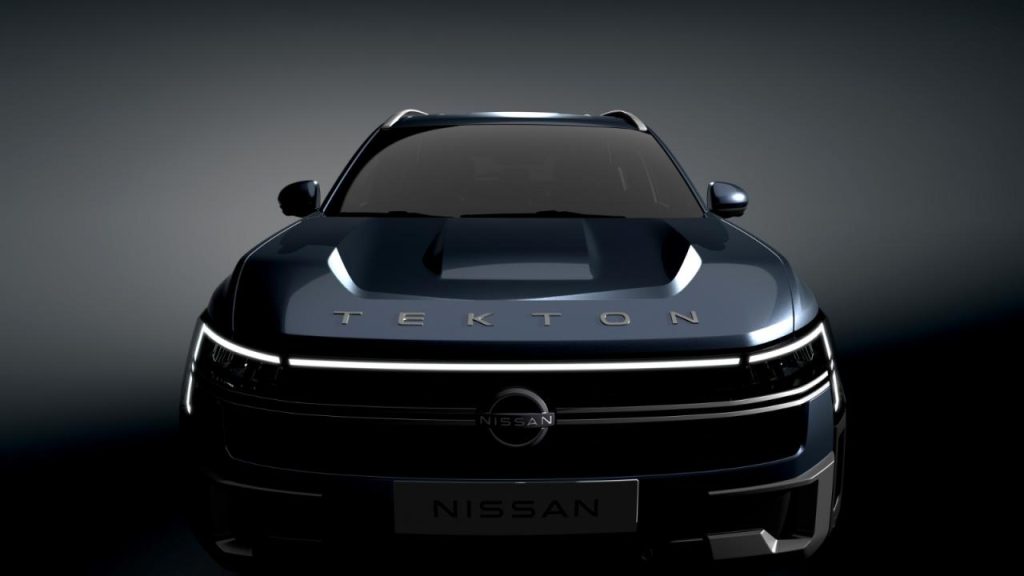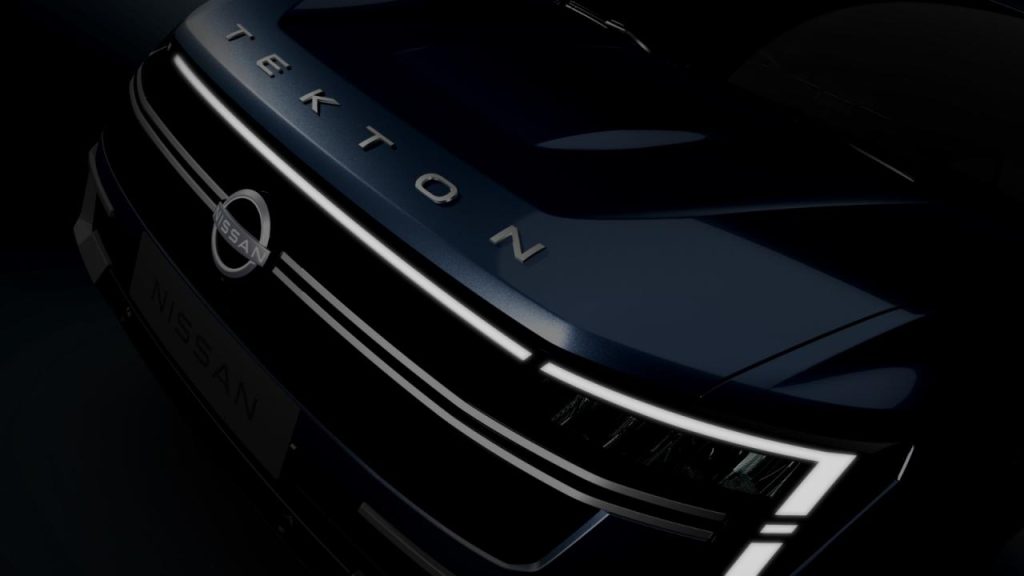Nissan is gearing up to re-enter the competitive Indian C-SUV segment with a bold new offering—the Nissan Tekton.
The automaker has officially confirmed the name and released a design preview, setting the stage for what could become a pivotal vehicle for its future in India.
Name & Strategic Positioning
The name “Tekton” is derived from ancient Greek, meaning “craftsman” or “architect,” a choice that appears deliberate in signalling Nissan’s intent to present a well-crafted, design-led premium SUV. As Nissan itself puts it, Tekton will occupy a position as its C-segment challenger—above its current Magnite offering and squarely targeting rivals such as the Hyundai Creta, Kia Seltos, Maruti Grand Vitara / Victoris, and Volkswagen Taigun.
By mid-2026, Nissan plans to launch Tekton in India, with production to be carried out locally at the Renault-Nissan Alliance facility in Chennai. The SUV is also expected to be exported to select markets under Nissan’s “One Car, One World” philosophy, alongside Renault’s new Duster (which will share the same platform).
Design Language & Styling Highlights
Front & Face
From the teasers, it is clear Nissan wants Tekton to project a commanding, muscular presence. The front end channels inspiration from the brand’s flagship Patrol SUV, especially in its bold, upright hood and strong horizontal elements. A signature across the nose is a wide LED light bar (or DRL strip) that joins both headlamp clusters, with split C-shaped LED elements in the main lighting units. The front bumper is sculpted aggressively, providing visual weight and signifying ruggedness.
Interestingly, teaser images show the name “TEKTON” inscribed across the leading edge of the hood—reminiscent of premium SUV branding seen in other markets.
Side Profile
Viewed in silhouette, Tekton carries a tall, upright stance with clean proportions. The design language avoids overly aggressive slope lines, opting instead for a composed, balanced look. One of the more distinctive motifs teased is a “Double-C” graphic on the lower doors—Nissan suggests this motif pays homage to mountain range forms, including a nod to the Himalayas.
Wheel arches appear pronounced, and the SUV is expected to ride on dual-tone alloy wheels. There’s also speculation that rear door handles may be hidden or repositioned, lending a cleaner, more dynamic side appearance.
Rear & Lighting
At the rear, the design teaser shows a full-width illuminated light bar connecting two C-shaped tail-lamp clusters—again reinforcing continuity in the lighting theme from front to rear. The Tekton badging is prominently placed on the tailgate. The overall rear has a simple, bold look, avoiding excessive sculpting in favour of clarity and visual strength.
Interior & Features
Nissan has held back full interior details, but the previews hint at a multi-layered dashboard layout, with a horizontal orientation, gloss black elements, and possibly contrast accents (copper or metallic). Anticipated features include:
- Large Touchscreen Infotainment.
- Fully Digital Instrument Cluster.
- Panoramic Sunroof.
- Ambient Lighting.
- Wireless Smartphone Charging.
- Push-Button Start/Stop.
- Advanced Safety & ADAS (possibly Level 2).
Though Nissan has not yet confirmed the complete safety suite or driver-assist features, media reports suggest the inclusion of multiple airbags, electronic stability control, and possibly a 360° camera system.
Architecture & Expected Powertrains
The Tekton is based on the CMF-B platform, part of the Renault-Nissan alliance’s modular architecture, which will also underpin the next-generation Duster. This platform supports a variety of powertrains (ICE, hybrid, even mild hybrid), which gives Nissan flexibility in tailoring Tekton to the Indian market.
While exact engine choices remain unconfirmed, speculation suggests a mix of naturally aspirated petrol, turbocharged petrol, and possibly hybrid or electrified variants. Transmission options may include manual, automatic/DCT, or hybrid-compatible units.
Market Outlook & Challenges
If Nissan can deliver Tekton at a compelling price point—rumoured in some circles to start around ₹10.5 lakh (ex-showroom)—it will be vying for attention in a crowded and fiercely competitive segment. But success will depend on more than styling: build quality, features, dealer network, and after-sales must all be up to scratch.
Tekton’s role is central to Nissan’s resurgence in India. The company sees it as a flagship for its growth ambitions, hoping it can raise brand perception and draw in buyers to its expanded lineup and dealer reach.
That said, delivering on promises will be critical—particularly in the realms of reliability, user experience, and total cost of ownership, all of which Indians expect from SUVs in this class.
Summary
In sum, the Nissan Tekton emerges as a bold, design-forward proposition for India’s C-SUV market. With strong visual cues borrowed from the Patrol, a distinctive lighting signature, and a thoughtful mix of styling, the SUV is poised to make a statement when it premieres in mid-2026.
If Nissan plays its cards right—and backs up the design with solid performance, quality, and value—Tekton might well become a meaningful participant in India’s SUV race.



